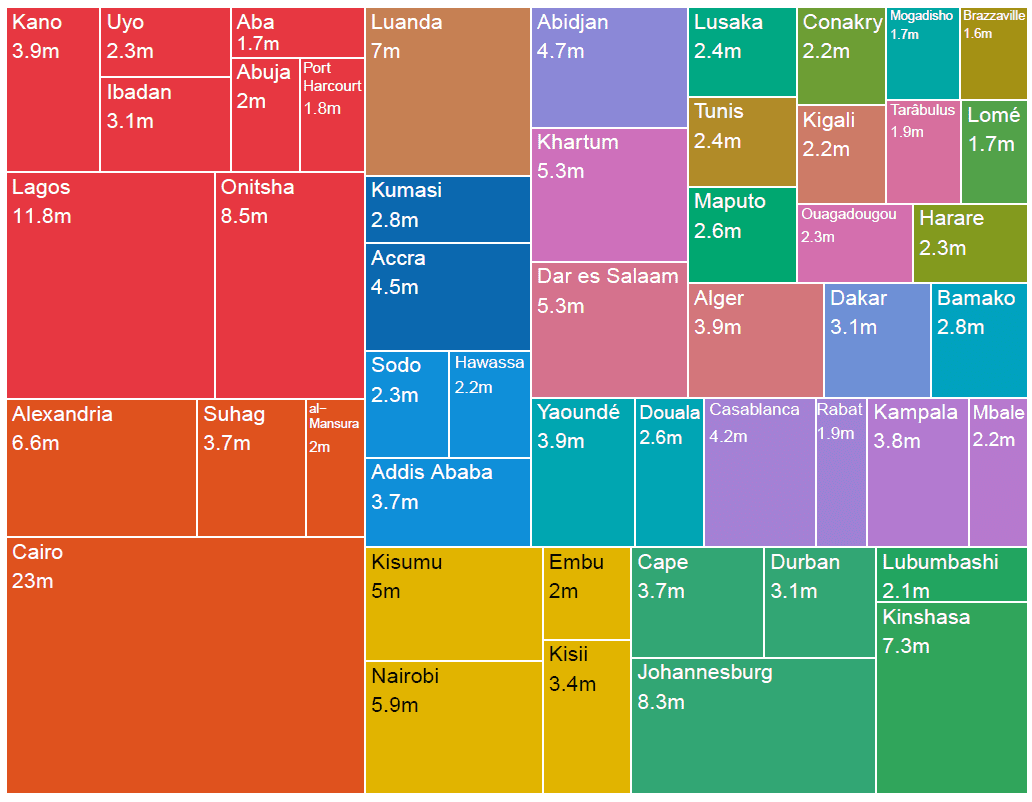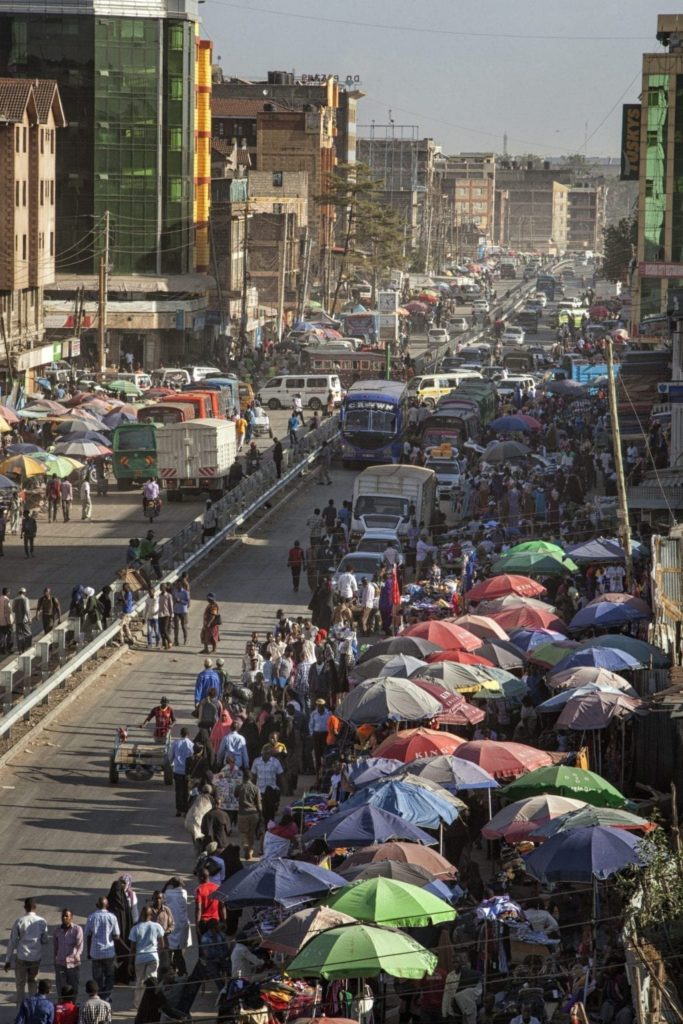Is Circularity the Solution to Africa’s Rapid Urbanization?
2020 estimates project Africa to be the continent with the fastest urban growth rate, with its cities seeing an additional 950 million people by 2050. According to the Organization for Economic Cooperation and Development (OECD), which established and maintains the geo-spatial database africapolis.org covering 7,600 urban agglomerations in 50 African countries, much of this growth is taking place outside of the big cities, making Africa’s urban transition one that offers great opportunities, as well as significant challenges. Yet there is a disconnect in which urban agglomerations are “developing most often without the benefit of policies or investments able to meet these challenges.” More than 35 co-authors and contributors of a forthcoming discussion paper on the circular economy in African cities do exactly that, developing recommendations addressing Africa’s urbanization challenges with circular policies and practices.

OECD data shows five large urban agglomerations of global business, media and policy-making in Africa: Cairo and Lagos are the two biggest, followed by Onitsha, Nigeria. With 8,5 million inhabitants, a large urban area is emerging, driven by growth and the merging of built-up areas to form one large agglomeration. With 8,3 million and 7,3 million inhabitants respectively, Johannesburg and Kinshasa, are the 4th and 5th biggest.
The OECD’s recent report on the circular economy in cities says that cities and regions have a key role to play as “promoters, facilitators and enablers” of circular economy. That report, however, focuses almost exclusively on cities in the Northern hemisphere. It is based on findings from 51 cities and regions in the industrialized world, and on lessons learnt from policy dialogues in six cities in the Netherlands, Sweden, Spain, the United Kingdom and Ireland.
But what about circularity in Africa’s cities?
The draft discussion paper “Circular Cities in Africa – A reflection piece by Africans about Africa” aims to fill the gap. It was convened by the Africa branch of ICLEI – Local Governments for Sustainability – and the African Circular Economy Network (ACEN) who brought together over 35 co-authors and contributors from across the continent and beyond. In a joint effort, stretching over almost half a year, the circular economy and urbanization experts co-authored the first draft of this paper focusing on the opportunities and barriers to more circular cities in Africa. They identify seven key considerations that require specific attention, seven resource systems to be looked at in depth, and seven key actions that are needed to improve the viability of circular strategies in Africa’s cities.
The circular economy concept is often rooted in case studies and theory that emerge from the Global North.
In Africa, circular economy is typically promoted by external actors supporting development in African contexts, but has yet to become a mainstream concept internally in urban development. The paper explains that small projects, private sector initiatives, or waste management processes usually implement circular practices in African cities; at the same time, some new networks and government entities have started interpreting the circular economy and begun to “establish governance and finance frameworks to support its implementation and regulation.”

The 7-7-7
The co-authors insist that circular economy principles need to be tailored to address pressing African developmental challenges: “… the starting point … should be citizen-focused, implemented with attention to social equity, quality of life, alternative infrastructure design, and service delivery.” For Africa’s cities to become more livable and sustainable, circular practices have a lot to offer, with seven key considerations requiring specific attention:
- To promote collaboration and appreciative co-learning
- To link circular strategies with existing service delivery mandates
- To implement circular economy principles within a social justice framework
- To acknowledge and support existing practices
- To invest in natural regeneration
- To align circular activities with governance frameworks
- To improve access to finance
The discussion paper expands those seven considerations with a deeper look at seven resource systems and their respective “circular opportunities”:
- Water & Sanitation
- Waste
- Food
- Energy
- Buildings & Construction
- Mobility
- Industrial Systems
For each of these seven systems, the authors identify and explore barriers, enablers and opportunities. In the Buildings & Construction Systems in African cities, for example, it provides concrete cases from South Africa, Egypt, Cameroon, Kenya, Nigeria, and Uganda, in which existing policies form a systemic barrier to more circular and sustainable approaches. Yet there are still issues with leadership. While governments are the biggest developers in African cities, most government systems and processes of procurement do not promote sustainable practices in doing so.
The discussion paper suggests a multitude of possible solutions and opportunities for each resource system –identifying and elaborating seven key actions that are actually needed to improve the viability of circular economy strategies in African cities:
- Data collection and development of ‘Systems of Strategic Intelligence’
- Research programs & pilot projects
- Mapping key industries and sectors
- Collaboration platforms
- Incubation and clustering of circular businesses and industries
- Awareness and training on circular practice
- Investment and outreach initiatives
The future of circularity in Africa
These provide food for thought for developers, urban planners, policy-makers and public and private finance. While the discussion paper is still in the draft stage, it was already discussed in November 2020 in a lively online workshop with over 150 participants. Comments from that workshop are currently being incorporated and a final version of the paper is expected in 2021.
At least three questions remain:
- Will we see if the OECD, an organization often criticized as being a servant of developed country interests and for its narrow membership of just 30 wealthy countries (excluding giants like Nigeria, Brazil, India, China and Russia), consider the findings and take up the recommendations for a more global and holistic approach to circularity in cities in all regions of the world?
- How will the recommendations reach urban policy-makers, developers, financiers and other stakeholders in Africa?
- How will the policy barriers and investment gaps into African cities, as identified by the OECD, ICLEI Africa and ACEN be addressed?
Millions of inhabitants in Africa’s cities expect answers, and they can’t wait until 2050.